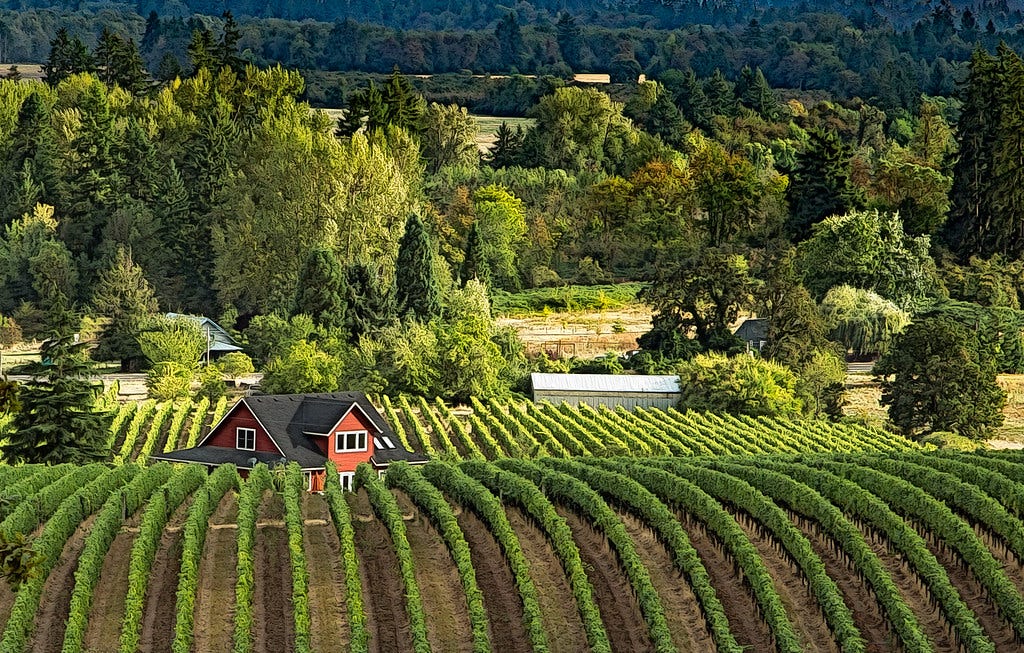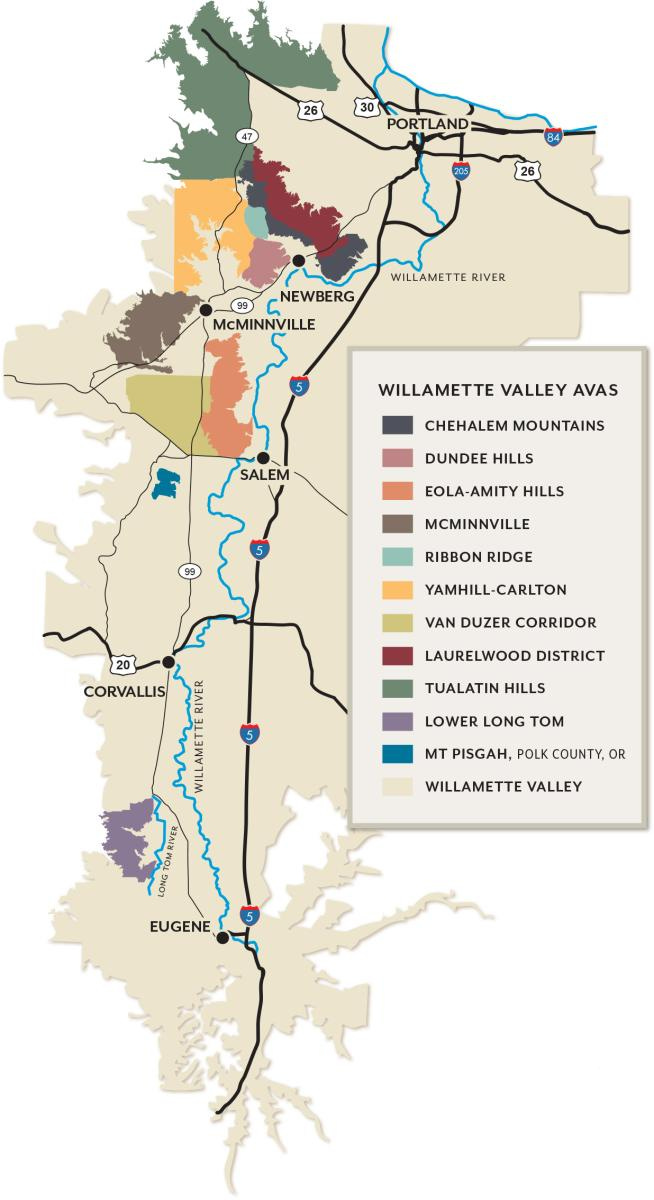When it comes to Pinot Noir in the New World, the Willamette Valley frequently tops the list—famed for its cool climate, rolling hills, and focus on quality. Bounded by the Coast Range to the west and the Cascades to the east, the region offers an ideal balance of moderate daytime warmth and crisp evening air, letting Pinot develop both bright fruit and subtle savory tones. Home to a patchwork of sub-AVAs like Dundee Hills, Eola-Amity Hills, and Ribbon Ridge, the Willamette Valley’s diversity shines through in a range of elegant, terroir-driven styles.
Defining Traits
Cool-Climate Precision
Ocean breezes and mild summers help maintain lively acidity in Pinot Noir, giving Willamette Valley wines a lifted, red-fruit profile with earthy or floral hints.Volcanic & Sedimentary Soils
From the red volcanic Jory soils in Dundee Hills to the marine sedimentary Willakenzie types in Yamhill-Carlton, Pinot adapts to each micro-terroir, showing distinctive structure and fruit expression.Sustainable Mindset
Many estates here embrace organic, biodynamic, or LIVE-certified practices, reflecting Oregon’s broader culture of environmental stewardship.Burgundian Parallel
Early pioneers recognized the valley’s climate parallels to Burgundy—leading to a style of Pinot that balances ripe fruit with Old World elegance.Sub-Regional Nuance
Each sub-AVA carries a unique signature—Eola-Amity’s brisk acidity, Dundee’s plush texture, Ribbon Ridge’s refined tannins—fueling endless exploration for professionals and enthusiasts.
Terroir & Winemaking Nuances
Clonal Diversity & Vineyard Aspect
A myriad of Pinot Noir clones (Dijon, Pommard, Wädenswil) spread across sunlit slopes or cooler, east-facing hillsides. Winemakers fine-tune clonal selection to harness both fruit intensity and savory complexity.
Keep reading with a 7-day free trial
Subscribe to Daily Terroir: Exploring Wine Regions One Day at a Time to keep reading this post and get 7 days of free access to the full post archives.






